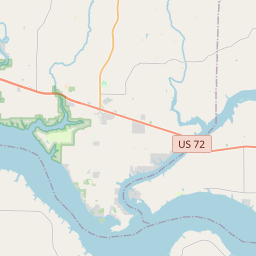Bettie Anne Highway
Historical marker location:
532 County Road 568, Rogersville, Alabama
( Marker is at the intersection of County Road 568 and County Road 51, on the left when traveling west on County Road 568.)
Marker installed: 2009







© OpenStreetMap contributors
Loading...
Searching for other points of interest within 3 miles of this location.Alabama is home to several important civil rights landmarks, including the 16th Street Baptist Church in Birmingham, which was the site of a deadly bombing in 1963, and the Edmund Pettus Bridge in Selma, which was the site of the "Bloody Sunday" confrontation between civil rights marchers and state troopers in 1965.
About Dale County
Dale County Timeline
Dale County, Alabama has a rich and diverse history that dates back thousands of years. The area was initially inhabited by indigenous groups such as the Creek and Cherokee tribes. They lived off the land and had a strong connection to the natural resources around them.
In the early 1800s, European settlers began to move into the area, attracted by the fertile land and abundant resources. In 1824, Dale County was officially established and named after Samuel Dale, a well-known frontiersman and soldier. The county quickly became a hub of agricultural activity, with cotton becoming the primary crop.
During the Civil War, Dale County saw significant military action. The Battle of Newton in 1865, one of the last battles of the war, took place in the county and resulted in a Confederate victory. The war had a profound impact on the area, leading to economic hardships and social changes.
Following the war, Dale County shifted its focus to industrial development. Railroad lines were built, connecting the county to major cities and markets. This allowed the growth of industries such as timber, manufacturing, and mining. The county's economy diversified, and communities like Ozark and Daleville thrived.
Today, Dale County continues to be a vibrant and thriving part of Alabama. Its history is celebrated through museums and historical sites, preserving the rich legacy of its indigenous peoples, settlers, and soldiers. The county remains an important agricultural and industrial region, while also embracing the natural beauty and recreational opportunities that make it a desirable place to live and visit.
In the early 1800s, European settlers began to move into the area, attracted by the fertile land and abundant resources. In 1824, Dale County was officially established and named after Samuel Dale, a well-known frontiersman and soldier. The county quickly became a hub of agricultural activity, with cotton becoming the primary crop.
During the Civil War, Dale County saw significant military action. The Battle of Newton in 1865, one of the last battles of the war, took place in the county and resulted in a Confederate victory. The war had a profound impact on the area, leading to economic hardships and social changes.
Following the war, Dale County shifted its focus to industrial development. Railroad lines were built, connecting the county to major cities and markets. This allowed the growth of industries such as timber, manufacturing, and mining. The county's economy diversified, and communities like Ozark and Daleville thrived.
Today, Dale County continues to be a vibrant and thriving part of Alabama. Its history is celebrated through museums and historical sites, preserving the rich legacy of its indigenous peoples, settlers, and soldiers. The county remains an important agricultural and industrial region, while also embracing the natural beauty and recreational opportunities that make it a desirable place to live and visit.
Dale County Timeline
This timeline provides a concise overview of the key events in the history of Dale County, Alabama.
- 1824: Dale County is established as the 50th county in Alabama.
- 1830s: European settlers begin to move into the area.
- 1861-1865: Dale County residents actively participate in the American Civil War.
- 1868: The town of Ozark is founded and becomes the county seat.
- Late 1800s: The community experiences significant growth due to the timber and agricultural industries.
- Early 1900s: Infrastructure development, including the establishment of railroads, further stimulates economic growth.
- 1930s: The Great Depression negatively impacts the local economy.
- 1940s: Dale County contributes to the war effort during World War II.
- 1970s: The construction of the Robert Trent Jones Golf Trail attracts tourists and boosts the local economy.
- 2008: Dale County gains national attention after the hostage crisis at Midland City.